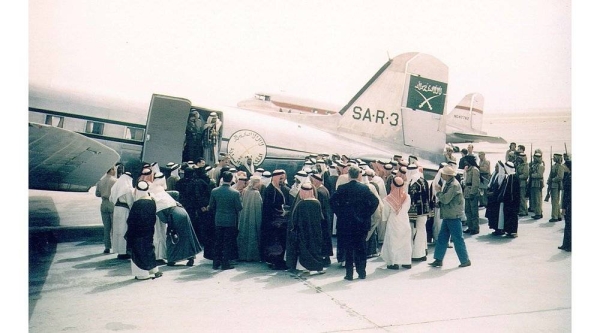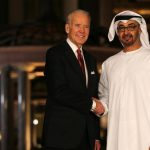King Abdulaziz bin Abdulrahman Al-Saud, the founder of modern Saudi Arabia, played a significant role in establishing the kingdom’s aviation sector. In 1945, President Franklin D. Roosevelt gifted him a Dakota DC-3 airplane, marking the beginning of civil aviation in Saudi Arabia. This gift laid the foundation for connecting the different regions of the country and establishing global links. The Dakota’s ability to land on unpaved runways made it easy to reach various parts of the kingdom, leading King Abdulaziz to realize the efficiency of air travel for connecting the nation. Impressed by the speed and ease of flying, he decided to purchase two additional planes, furthering his vision of expanding air travel within the country.
The Dakota DC-3, manufactured by Douglas Aircraft in 1935, was a twin-engine, low-wing monoplane capable of accommodating 28 passengers. It had a maximum payload of 6,000 pounds and could reach speeds of up to 370 kilometers per hour. The aircraft played a crucial role in establishing air navigation in Saudi Arabia, with the first international flight transporting Palestinian pilgrims to the holy sites under King Abdulaziz’s orders. The early pioneers in the aviation sector laid a solid foundation that later aligned with international standards, as each site selected complied with criteria established by organizations such as the Chicago Convention.
King Abdulaziz’s commitment to the aviation sector was further advanced by his successors, including King Saud and King Faisal. Saudi Arabia became the first operator of Boeing 707s, 747 jumbo jets, and L1011 TriStars in the Middle East, signaling the country’s dedication to establishing global links through air travel. The aviation sector in Saudi Arabia has benefited from generous support and a forward-thinking vision of connecting the kingdom to the world. King Abdulaziz’s swift vision symbolized the transition from traditional modes of transportation, such as camels, to modern airplanes, paving the way for the country’s aviation industry to thrive and expand.
The Dakota’s arrival in Saudi Arabia in 1945 marked a turning point in the kingdom’s history, as it laid the foundation for civil aviation and connected different regions of the country. King Abdulaziz’s decision to purchase additional planes after realizing the efficiency of air travel showcased his commitment to expanding the aviation sector and connecting the nation. The aircraft’s ability to land on unpaved runways made it easy to reach various parts of the kingdom, furthering the king’s vision of establishing global links through air travel.
The Dakota DC-3, gifted by President Roosevelt, played a crucial role in establishing air navigation in Saudi Arabia, with the first international flight transporting Palestinian pilgrims to the holy sites. The early pioneers in the aviation sector set the stage for future advancements, aligning with international standards and criteria established by organizations such as the Chicago Convention. King Abdulaziz’s successors, including King Saud and King Faisal, continued to build upon this legacy, making Saudi Arabia the first operator of various aircraft types in the Middle East and solidifying the country’s commitment to connecting the kingdom to the world through air travel.











